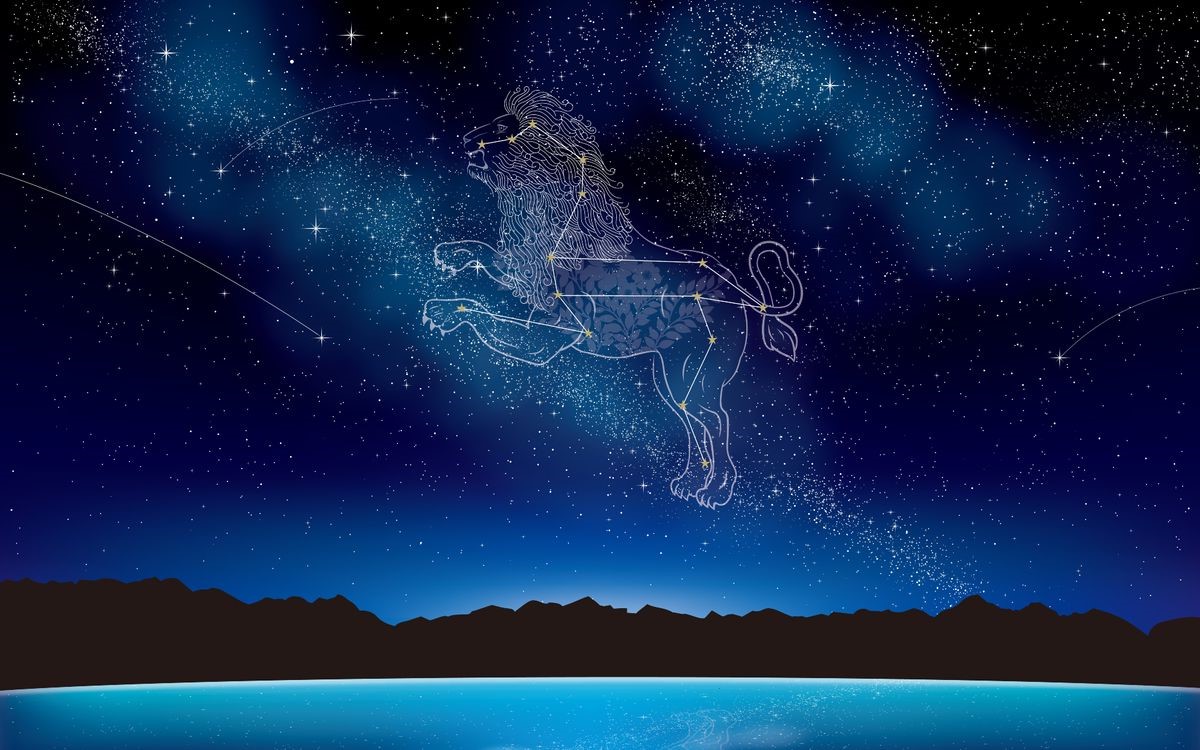
The Leo constellation, named after the Latin word for lion, is one of the most recognizable and revered constellations in the night sky. Situated along the ecliptic, this constellation has been a source of fascination and inspiration for millennia. From ancient civilizations to modern stargazers, Leo has captured the imagination of people across cultures and time periods.
In this article, we will delve into 20 amazing facts about the Leo constellation, shedding light on its rich mythology, prominent stars, and celestial significance. Whether you're a seasoned astronomer or simply an admirer of the cosmos, these facts will deepen your appreciation for this majestic constellation and the captivating stories woven into its celestial tapestry. So, let's embark on a cosmic journey to uncover the wonders of Leo, the celestial lion, and unravel the mysteries that have enchanted humanity for generations.
Key Takeaways:
- The Leo Constellation, with its bright stars and deep-sky objects, has fascinated humans for centuries and is visible from both hemispheres, making it a captivating sight in the night sky.
- People born under the zodiac sign of Leo are associated with traits like strength and leadership, inspired by the majestic lion represented by the Leo Constellation.
The Leo Constellation is one of the oldest recognized constellations.
The Leo Constellation is one of the oldest recognized constellations in the night sky. It was documented by the ancient Mesopotamians and Greeks, and its prominence has endured throughout history.
It is one of the zodiac constellations.
Leo is one of the 12 zodiac constellations, representing the lion in Greek mythology. It is a significant constellation in astrology and is associated with individuals born between July 23 and August 22.
The Leo Constellation is home to several bright stars.
Regulus, Algieba, and Denebola are among the prominent stars that form the Leo Constellation. These stars contribute to the constellation's distinctive shape and are visible to the naked eye.
The radiant Leonid meteor shower originates from the Leo Constellation.
Every year in November, the Earth passes through the debris left by the comet Tempel-Tuttle, resulting in the Leonid meteor shower. This celestial event appears to radiate from the Leo Constellation, offering a spectacular display of shooting stars.
The Leo Constellation is rich in deep-sky objects.
Within the boundaries of Leo, there are numerous galaxies, including the famous Messier 65, Messier 66, and the Leo Triplet. These deep-sky objects are a source of fascination for astronomers and stargazers alike.
The constellation's name has its roots in ancient mythology.
The name "Leo" is derived from the Latin word for lion. In Greek mythology, the constellation represents the Nemean Lion, a creature slain by the hero Hercules as one of his twelve labors.
Leo is one of the few constellations that actually resembles its namesake.
When looking at the Leo Constellation, it's possible to discern a pattern resembling the majestic form of a lion, with its head and mane forming a distinctive shape.
The Leo Constellation is visible from both hemispheres.
Due to its location along the ecliptic, the Leo Constellation can be observed from various parts of the world, making it a familiar sight in both the northern and southern hemispheres.
The Leo Constellation is associated with the zodiac sign of Leo.
Individuals born under the zodiac sign of Leo are believed to exhibit traits associated with the lion, such as strength, courage, and leadership. The constellation's influence is often referenced in astrology.
The Leo Constellation has been referenced in various cultures throughout history.
From ancient civilizations to modern-day societies, the Leo Constellation has been a subject of fascination and significance, featuring in myths, art, and literature across diverse cultures.
The Leo Constellation is part of the Royal Family of constellations.
In traditional Western astronomy, the Leo Constellation is considered part of the Royal Family of constellations, which also includes the constellations of Cassiopeia, Cepheus, and Draco.
The Leo Constellation is home to the famous star Regulus.
Regulus, also known as Alpha Leonis, is the brightest star in the Leo Constellation. Its name means "little king" in Latin and is a reference to its position as the "heart" of the celestial lion.
The Leo Constellation is a prominent feature in the night sky during the spring months.
During the spring season in the northern hemisphere, the Leo Constellation is particularly visible, offering stargazers the opportunity to admire its distinctive shape and bright stars.
The Leo Constellation is a popular subject for amateur astronomers.
Amateur astronomers often seek out the Leo Constellation for its abundance of galaxies, star clusters, and nebulae, making it a rewarding area of study for those exploring the night sky.
The Leo Constellation is part of the ecliptic.
As one of the zodiac constellations, Leo lies along the path of the Sun, Moon, and planets, known as the ecliptic. This positioning contributes to its astrological significance.
The Leo Constellation is a source of inspiration in art and literature.
Throughout history, the Leo Constellation has inspired artists, writers, and poets, who have incorporated its symbolism and imagery into their creative works, adding to its enduring cultural impact.
The Leo Constellation is a prominent feature in celestial navigation.
Sailors and navigators have long used the stars of the Leo Constellation to aid in celestial navigation, utilizing its position in the night sky to determine direction and location.
The Leo Constellation is a popular motif in jewelry and fashion.
The distinctive shape of the Leo Constellation, with its association with strength and regality, has made it a popular motif in jewelry and fashion, often adorning accessories and clothing.
The Leo Constellation is a captivating sight in the night sky.
Whether observed through the naked eye or a telescope, the Leo Constellation's bright stars and deep-sky objects make it a captivating and awe-inspiring feature of the celestial panorama.
The Leo Constellation is a testament to the enduring fascination with the wonders of the universe.
The enduring presence of the Leo Constellation in human culture and its continued allure to astronomers and stargazers serve as a testament to the timeless fascination with the mysteries and beauty of the cosmos.
The Leo Constellation, with its rich history, cultural significance, and celestial splendor, continues to captivate the imagination and inspire a sense of wonder at the vastness of the universe. Whether as a subject of ancient mythology, a source of artistic inspiration, or a celestial marvel in the night sky, the Leo Constellation remains an enduring symbol of humanity's enduring fascination with the cosmos.
Conclusion
In conclusion, the Leo constellation is a fascinating and prominent feature of the night sky, steeped in mythology and astronomical significance. Its bright stars and captivating history have made it a popular subject of study and admiration for millennia. Whether you're an avid stargazer or simply curious about the wonders of the universe, exploring the celestial marvels within the Leo constellation can be a truly enriching experience. From its association with the mighty lion to its role in ancient cultures and modern astronomy, Leo continues to inspire awe and wonder, serving as a timeless reminder of the enduring allure of the cosmos.
FAQs
What is the best time to view the Leo constellation?
The Leo constellation is most visible in the Northern Hemisphere during the spring months, particularly in March and April. During this time, the constellation reaches its highest point in the sky, offering optimal viewing opportunities for stargazers.
How can I locate the Leo constellation in the night sky?
To locate the Leo constellation, look for the distinctive backward question mark pattern known as the "Sickle," formed by the bright stars that represent the lion's head and mane. This recognizable shape can guide your eyes to the heart of the constellation, where you can further explore its celestial wonders.
Was this page helpful?
Our commitment to delivering trustworthy and engaging content is at the heart of what we do. Each fact on our site is contributed by real users like you, bringing a wealth of diverse insights and information. To ensure the highest standards of accuracy and reliability, our dedicated editors meticulously review each submission. This process guarantees that the facts we share are not only fascinating but also credible. Trust in our commitment to quality and authenticity as you explore and learn with us.


